Using Health Insurance to Attend Drug Treatment in California
Article Overview: Health Insurance and Addiction Treatment
A common concern of those struggling with drug addiction is health insurance and cost of treatment. Sadly, instead of being able to focus solely on their rehabilitation, many people worry that the price of recovery is just too much to bear, especially if they wish to seek treatment in an inpatient center.
According to the National Institute on Drug Abuse, medical detox is not enough to ensure the recovery of a patient, as it leaves out other side-effects of the addiction (social, emotional or psychological). Long-term care from a holistic approach is considered to be the best chance a drug addict can have to overcome their condition. However, as most of the people who enroll in a California drug rehab may know, this type of treatment not only requires payment for its medical component, but also for long-term overnight stays, meals, and other therapies.
The best chance these patients have is that their insurance will cover these costs. Still, there are a lot of questions that arise at this point, especially regarding whether drug rehab is eligible for insurance or not.
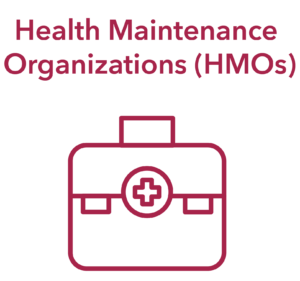 Health Maintenance Organizations (HMOs)
Health Maintenance Organizations (HMOs)
The laws of the state of California regulate this category of healthcare coverage. They are available either as groups or individual plans. For patients to benefit from this type of insurance, they must have a primary care doctor that provides basic care and gives referrals to other specialists when needed. Keep in mind that HMOs will not pay for a service if a patient seeks care outside the approved network, except in cases of emergency. To receive this type of coverage, patients must live in the area of HMO services. If not, they are only entitled to emergency care.
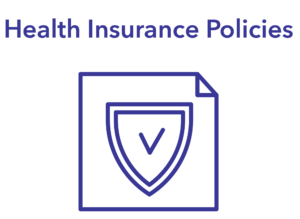 Health Insurance Policies
Health Insurance Policies
Health Insurance Policies cover patients if they require medical care or even hospitalization. Most providers have a list of requirements and special conditions that stipulate when the policy does and does not apply in their contracts. As HMOs, they are available for groups or individual/family.
Typically, group policies are purchased by employers for their staff. In some cases, employees can also add their family members to the coverage. However, the employer might require some payment (partial or full) of the monthly premium.
People can purchase individual/family plans outside of their workplace. These plans must comply with the regulations imposed by the California Department of Insurance.
 Self-Insured Plans
Self-Insured Plans
Larger employers may offer self-insured plans, meaning they have a particular budget to cover the healthcare of the employees. Most of them have contracts with insurance companies in place that manage the health benefits. In such instances, employees may not have the same benefits or protections as other types of coverage, as they are not regulated by the CDI, but by the Federal Employee Retirement Income Security Act of 1974 (controlled by the EBSA).
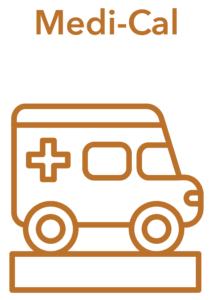 Medi-Cal
Medi-Cal
This type of insurance is the Californian version of the Medicaid program and covers lower-income families and single adults. Managed Care Organizations provide the plan, which is free but only granted to those meeting the requirements.
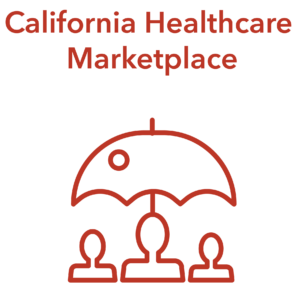 California Healthcare Marketplace
California Healthcare Marketplace
Individuals, families, or small businesses can purchase insurance products offered by private providers through the Covered California platform. The platform was created as an integral part of the Affordable Care Act. It stipulates a set of regulations the marketplace must operate by, including the coverage of mental health and substance abuse services.
How much treatment will insurance cover?
The coverage requirements and limitations depend on the type of policy a patient has. There may be some limitations concerning what kind of care is covered by the plan. For instance, insurance companies may pay for the detox process and the drugs needed during this stage (as most patients require medication during the rehabilitation process,) but they might not or only partially cover the subsequent rehab therapies a patient needs.
Even policies purchased from the Covered California Marketplace may be subjected to certain limitations. It is vital to check the fine print of the plan before enrolling into an inpatient (or outpatient) program to see how much of the cost the insurance company can cover.
There are several secure ways a person can check what their insurance covers:
- Consulting the summary of coverage and benefits by logging into the account provided by the insurance company. This compendium holds a listing of all the services the insurance plan covers.
- Call or email an insurance company representative to ask them about the coverage. They will also provide information on what drugs the insurance covers or for what clinics or treatment plans they qualify.
- Contact a reputable treatment facility and ask for a verification of benefits with the facility’s program.
According to a paper from the Bureau of Labor Statistics, 81% of employees with health insurance also had coverage for alcohol abuse treatment, and 75.5% had it for drug abuse treatment. In some cases, patients can receive coverage as a single plan. The most common type of coverage was for inpatient detox, quickly followed by outpatient programs and inpatient rehabilitation.

Many rehab programs, both private and public, will accept insurance, provided the treatment is covered by a patient’s specific plan. There is also the possibility of seeking care within a state-funded program for individuals with lower incomes or no insurance.
The issue at hand might not refer to the programs offered by detox centers, but more to the policies itself. While insurance might cover most applications, such as medical detox programs, certain limitations may apply. Some plans might exclude specific categories of programs, especially those that are non-medical. Most detox centers offer guidance to potential patients and help them assess how much of their treatment their insurance will cover.
 There are several options for individuals with no or poor insurance coverage:
There are several options for individuals with no or poor insurance coverage:
- Centers that offer fees based on the income of the patient; these centers provide individualized care by asking for payment for only what the patients can afford;
- State-funded programs, although patients have to meet certain requirements to be admitted (specifically low income)
- NGOs that specialize in drug rehabilitation can redirect addicts to clinics that admit patients without insurance or without the means to pay medical bills.
- The SAMHSA offers grants to low-income people, helping them fund their drug treatment.
ObamaCare and Mental Health Treatment Policies
ObamaCare (official known as the Affordable Care Act or ACA) allows states to expand Medicaid to increase coverage for low-income people under 65, many who had not been eligible for coverage. The act came into effect starting January 1st, 2014 and established a new income limit of 138% of the federal poverty line. According to a 2016 report, more than 4.7 million people in the State of California were covered by Medi-Cal since the ACA was introduced.
The California Department of Health Care Services offers a comprehensive list of all the programs and services people can benefit from as a result of the ACA
What is the Parity Act?
The Mental Health Parity Act and the subsequent Mental Health Parity Act and Addiction Equity Act (MHPAEA) demands mental health and drug addiction coverage be at parity with medical and surgical coverage. In other words, the act stipulates that there should not be any differences between accessing the two regarding difficulty or price.
That means that the health plans under the Parity Act must guarantee parity for co-pays, out-of-pocket payments, co-insurance, and medical necessity criteria that determine the type of treatment the plan covers.
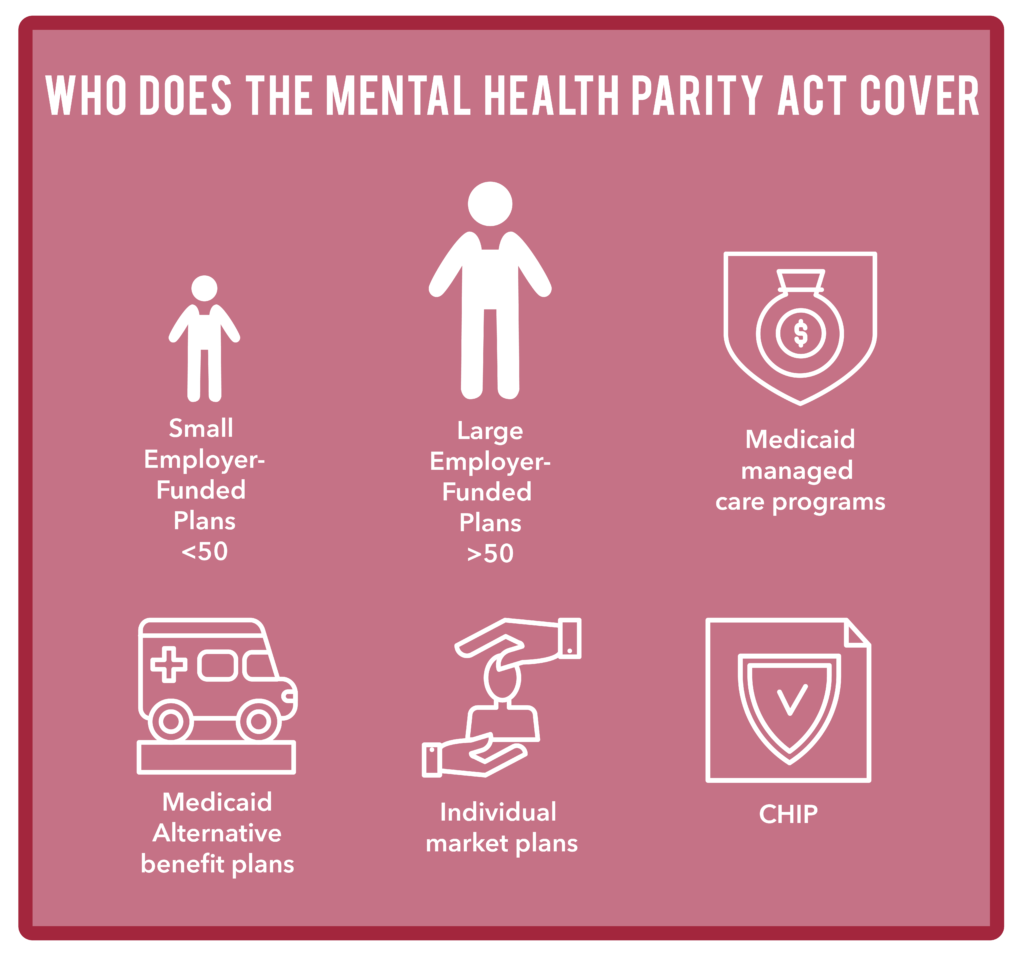
Who it applies to:
- Small employer-funded plans (with 50 or fewer employees);
- Large employer-funded plans (with over 50 employees);
- Medicaid managed care programs;
- Individual market plans;
- CHIP;
- Medicaid alternative benefit plans;
There are a few plans exempt from the MHPAEA requirements:
- Medicare;
- Retirement plans;
- Some Medicaid plans;
- Self-insured plans sponsored by the government;
- Plans sponsored by churches;
- TriCare;
- Small employer plans (created before March 23rd, 2010);
Though the MHPAEA is a federal requirement, states can adopt stricter rules when implementing the parity rule. Moreover, the parity act cannot constrain insurance providers to offer coverage for mental health and addiction treatment. If the providers have such coverage, then the parity act just makes sure there are no cost or accessibility differences between them and other medical treatments.
In California, several agencies enforce the parity law: the California Department of Managed Health Care, the California Department of Insurance, and the California Department of Labor.
What about health insurance I receive from my employer? Am I at risk of losing employment?
According to the Family and Medical Leave Act, those who wish to enter a rehabilitation treatment facility can benefit from up to 12-weeks unpaid leave from work annually. As such, if the patient wants to follow a 24/7 inpatient treatment program, they can do so without having to quit their job. The Act applies to all public institutions, schools, as well as businesses with over 50 workers. Depending on the insurance provider (Anthem, Blue Shield, Kaiser Permanente, Etc.) will also be a major determining factor in how much is covered.
Individuals receiving insurance from their employer worry about how much information is accessible about their treatment. However, according to the Health Insurance Portability and Accountability Act, only patients, medical staff and insurance company officials are allowed access to medical files. Doctors and insurers are prohibited from sharing personal information about patients.
Insurance companies will provide reports on healthcare expenses to the employer, but this has more to do with healthcare management than accessing personal patient data. There are some cases where employees share personal medical information with the employer. For instance, in the event of an accident that leads to a disability, the employee might share their medical file with their employer when they ask for proper accommodations.
Similarly, asking for leave might warrant some extra information from the employee concerning their reasoning. HIPAA does not forbid employers to request medical information in such cases, though the employee may deny the request.
But even if the employer is aware their employee is following a drug rehabilitation program, the American with Disabilities Act protects them from discrimination in the workplace. Moreover, the act forces employers to ensure a drug or alcohol-free environment.
What are State-Funded resource available to those without health insurance?
When a person is ready to seek drug addiction treatment but worries they cannot afford the costs or lacks the necessary insurance coverage, they can have access to several low-cost or cost-free options funded by the state.
The Directory of Single State Agencies for Substance Abuse Services has a list of contacts for each state’s agency dealing with substance abuse issues. Contacting this institution can provide people with information concerning free clinics, treatment programs funded by the state, and other services that may help. Additionally, the SAMHSA platform also indexes such centers and allows individuals to search for treatment.
The state of California has various facilities where a drug addict can find treatment for free or receive an affordable program provided by the state. These public programs not only offer detox treatments, but some also provide patients with counseling, 12 step groups, and so on. If a California resident wishes to seek treatment in a private inpatient facility, they may apply to affordable healthcare through MediCal or seek affordable plans via the Covered California Marketplace.
Here are some of the additional free or low-charge options patients can check:
Vocational Rehab – these facilities get funding from the clients working in the treatment program. Religious groups often fund them or operate themselves under a certain spiritual practice. For instance, the Salvation Army is considered a Vocational Rehab.
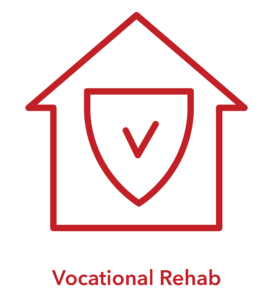
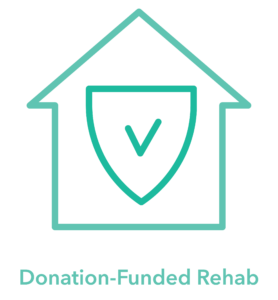
Rehab centers funded by donations – these facilities receive funding from individual or NGO donations. They often work as an extension of a certain organization.
Although various options exist, it’s important to note that not all these facilities offer the same care. The type of drug, the condition of a patient, as well as any co-occurring conditions influence the type of treatment an individual should receive.
Most state-funded clinics can afford to take in patients and help with their rehabilitation but lack the necessary medical personnel or resources to provide medical detox. As such, they can offer potential patients assistance during withdrawal, but cannot provide medication to help improve symptoms. In the event of a medical complication during this process, the patient is taken to the hospital to receive care.
Overcoming Your Addiction
While federal laws continuously try to be more inclusive of mental health and addiction conditions in health insurance, making sure people can access proper care, the fact remains that many insurance providers can impose their own set of rules when it comes to coverage.
Many rehab clinics can offer proper guidance to patients and help determine if their insurance can cover their treatment as well as provide several payment plans to make their premium services more accessible.




